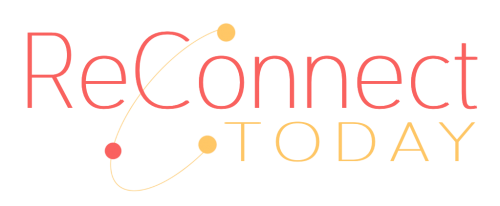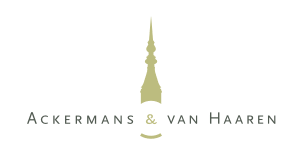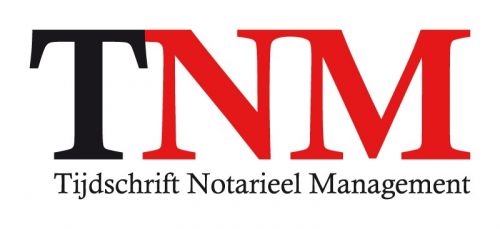From complex legal documents to clear communication
Better business outcomes through legal design.
The Visual Lawyer helps legal and compliance teams create contracts, policies, and other legal documents that people actually read, understand, and act on. How? By looking at every document from the reader's perspective, so people can easily find what they need, understand what they read, and take action. The result? Fewer questions, faster decisions, and better outcomes for your business.
Ready to see how legal design works for your documents?
theuntold(71van261).jpg)
Book a 20-Minute Discovery Call
Walls and bridges
What does a typical legal document look like? A wall of text full of legal jargon. There’s asterisks, clauses, Latin, and don’t forget the small print. A regular person would need a manual to get their head around it all. This helps no one: the end user finds it tedious and confusing, which leads to misunderstandings, slows down negotiations, and maintains the reputation of law as an alienating, impenetrable fortress populated by people who speak legalese and probably wear a nightcap in bed.
Legal information design blows up those walls of text and rebuilds them into something much better: a bridge that connects the legal profession to everyone who ever has to deal with legal documents. It’s a bridge between complexity and simplicity, between a message and its recipient. After seeing what legal design can do, no one wants to go back to walls of text.
What is legal information design?
There’s a shift happening in the legal world: a move towards humanisation. Legal design is one of the tools that makes it possible. It’s often described as ‘a breath of fresh air’ for the legal profession — and it’s easy to see why. Legal design is changing the perception of law as a discipline that’s stuck in the past and cares more about status and tradition than about the people who come into contact with it — aka EVERYONE.
How? Primarily, by turning legal documents from impenetrable walls of text in legalese into documents designed and written for humans. Don’t be tricked by the word ‘design’, though: this isn’t about making things look pretty. A good legal designer will combine a solid understanding of law with editing skills, information design, hands-on visual thinking, behavioural economics and social psychology.
By following the principles of legal design, you can communicate complex information in a clear and user-friendly way. The result is clear, concise, well-structured documents that are easy to navigate and understand. Documents that build better internal and external client relationships. Documents that are good for everyone involved. (psst. they are good for your bottom line, too.)
The smartest players in the legal landscape are quickly learning to apply this approach to their work, and seeing the results. We know for a fact that better documents lead to better relationships, better outcomes, better KPIs, and better business — and The Visual Lawyer is here to help you get there.
theuntold(78van261) (1).jpg)
Who needs legal design?
Everyone who wants to communicate legal information in the most user-friendly way.
Legal design is a must for game changers and innovators. Our clients include in-house legal departments from the private and public sector, law firms, alternative legal service providers and entrepreneurs.
We also give guest lectures at the universities of Antwerp, Ghent and Hasselt. We love to inspire the next generation of legal professionals so don't hesitate to contact us to request a guest lecture.
Ready to see how legal design works for your documents? Book a 20-Minute Discovery Call.
Trusted by leading legal teams
Why legal design rocks
Better relationships
Legal design puts your users at the heart of what you do — and it shows. It helps build transparency, trust and respect, because people appreciate your effort to make documents simple and clear for them.
Legal design puts your users at the heart of what you do — and it shows. It helps build transparency, trust and respect, because people appreciate your effort to make documents simple and clear for them.
Better communication
Legal design uses a combination of restructuring and decomplicating the text with visual elements like icons, explanatory tables, timelines, diagrams and infographics. It gives you shorter, more visual documents that make your messages more clear, convincing and engaging.
Legal design uses a combination of restructuring and decomplicating the text with visual elements like icons, explanatory tables, timelines, diagrams and infographics. It gives you shorter, more visual documents that make your messages more clear, convincing and engaging.
Future-proof business
Our rapidly changing world isn’t kind to conservative industries. Legal design makes your business future-compatible by making it easier to deliver your messages in the digital world and giving your clients the experience they have come to expect: clear and modern documents that are easy to digest.
Our rapidly changing world isn’t kind to conservative industries. Legal design makes your business future-compatible by making it easier to deliver your messages in the digital world and giving your clients the experience they have come to expect: clear and modern documents that are easy to digest.
Stand out from the rest
We’re living in an era of information overload. People want their information to be digestible — so whoever communicates better, wins. The legal world is starting to catch up, but this approach is still reasonably new. This creates an opportunity to get ahead of your competition. (who doesn’t like an unfair advantage?)
We’re living in an era of information overload. People want their information to be digestible — so whoever communicates better, wins. The legal world is starting to catch up, but this approach is still reasonably new. This creates an opportunity to get ahead of your competition. (who doesn’t like an unfair advantage?)
Makes law more accessible
Being human-centric, legal design simplifies legal content without making it simplistic. It bridges the gap between legal professionals and layman, and helps correct the image of law as an overcomplicated discipline that’s full of jargon and stuck in the past into something people can understand and engage with.
Being human-centric, legal design simplifies legal content without making it simplistic. It bridges the gap between legal professionals and layman, and helps correct the image of law as an overcomplicated discipline that’s full of jargon and stuck in the past into something people can understand and engage with.
Better business
Legal design improves your whole business. Better relationships, better communication and higher efficiency are good for your KPIs and your bottom line. This isn’t speculation: we have stats and case studies, and we are happy to share them.
Legal design improves your whole business. Better relationships, better communication and higher efficiency are good for your KPIs and your bottom line. This isn’t speculation: we have stats and case studies, and we are happy to share them.
theuntold(77van261) (2).jpg)
Meet The Visual Lawyer
The person behind The Visual Lawyer is Dominique Meert. Dominique’s academic background is in economics and law, but after 15+ years in Belgian and international law firms her love of combining separate disciplines led her to an unconventional path: she became an independent consultant. Her experience of working in financial and legal organisations and her extensive training in visual strategy, innovation and design thinking have given her a pretty unique combination of skills — one that helps her solve her clients’ business problems through innovation. As The Visual Lawyer, Dominique often teams up with her trusted strategy and design partners to produce outstanding work on each specific project.
Curious by nature, Dominique has always been an early adopter who likes to stay ahead of the curve and helps others do the same. Luckily, she loves teaching as much as she does learning. As a trainer and consultant, she never gets tired of seeing how legal design improves communication and collaboration between legal professionals, their business partners and their clients.
She is also the founder of 2KnowHow2, which helps legal service providers optimise the use of their knowledge to deliver smarter services and products to internal and external clients.
When she’s not working, Dominique can be found dancing flamenco or learning a new language (currently Arabic, with Italian and Hebrew up next). The top item on her bucket list is to experience the Mille Miglia from the driver’s seat.
What we can help you with
More and more players in the legal landscape are getting on board with legal design. It’s not some passing trend: it’s an evolution — so the earlier you start, the better for your business. We are here to optimise your legal, compliance and regulatory documents of all kinds: contracts, general terms & conditions, compliance policies (data privacy, anti-corruption, anti-money laundering), standard operating procedures, internal and external newsletters, training materials, client communications and any other kinds of documents.
Ready to see how legal design works for your documents? Book a 20-Minute Discovery Call.
Contract design
Fundamentally, contracts are tools: structured communications that aim to reconcile the parties’ expectations. A tool should speed up your business, not block it or slow it down — but in the real world, not all contracts work so well. When your contracts aren’t user-friendly (badly structured, written in legalese), it can lead to one of two Pretty Bad Things:
1) miscommunication (if people misunderstand the contract)
2) un-communication (if they don’t read the contract at all, because it feels like an impossible task)
A contract that’s hard for one of the parties to read and understand is a risky one, because it’s likely that they will interpret it differently. Cue unmet expectations, disappointment, and before long, you may have a dispute.
Contract design prevents that by making these contracts easy to read and understand. When you create contracts with the user in mind, you stop seeing them as a tool written by lawyers for lawyers. It makes you rethink the contract from the actual user’s perspective: for example, a client who has to sign the contract, or salespeople who will be negotiating it.
Here are some of the brilliant ‘side effects’ of applying legal design to your contracts:
- shorter negotiation times
- better risk management
- reduced litigation risk
- better internal and external client relationships
Contract design can take many forms. For each case, the right choice will depend on things like the type of client(s), the level of contract automation and the specific objectives you want to achieve.
For a complete overview of how your contract can improve, our 360 Contract Design Scan is the ideal starting point. After we discuss your goals and align on what you want to achieve, simply send us your contract for review. We’ll analyse its structure, language and design with a focus on enhancing navigation, readability and overall clarity. You'll receive a set of practical recommendations to create a user-friendly contract that fully supports your business objectives while remaining 100% legally compliant.
After the scan, you’ll have two options:
- Implement the recommendations yourself
With a clear set of recommendations in hand, you can confidently apply them at a pace that works for you. - Let us redesign for you
We can take on the redesign to transform your contract into a visually appealing, user-centered contract that drives your business forward.
We create easy to use templates in Microsoft Word that are fully customizable. They’re designed with easy customization in mind, allowing you to make quick updates during your yearly contract review. Using Word means you’ll have full control over updates whenever you need. We also make sure that our redesigned documents can easily integrate with your existing contract automation or other systems.
Take a look at some examples made in Word.
Policy design
Ever wondered why - despite having company policies - people still do things they shouldn’t or don't do things they should? As an employer, you would expect that when employees know how to act in certain situations, they’ll follow the rules. But in practice, this doesn’t always happen. How come? One key reason is that employees don’t always understand what’s expected of them. Policies often come across as long, dense documents that are hard to read, understand and follow.
But what if we look at policies from the employee’s perspective? That’s where legal design steps in. Legal design transforms traditional policies into well-written, visually engaging documents that employees are more likely to read, understand and actually apply. Clear, accessible policies not only improve compliance but also reduce misunderstandings, making it easier for employees to follow guidelines and make informed decisions.
With a user-centered approach, we turn policies into practical guides that serve your business goals and your people.
For a complete overview of how your policy can improve, our 360 Policy Design Scan is the ideal starting point. After we discuss your goals and align on what you want to achieve, simply send us your policy for review. We’ll analyse its structure, language and design with a focus on enhancing navigation, readability and overall clarity. You'll receive a set of practical recommendations to create a user-friendly policy that meets both your business and compliance needs.
After the scan, you’ll have two options:
- Implement the recommendations yourself
With a clear set of recommendations in hand, you can confidently apply them at a pace that works for you. - Let us redesign for you
We can take on the redesign to transform your policy into a visually appealing, user-centered policy that doesn’t just check boxes but becomes a useful and accessible resource for everyone.
Take a look at some examples made in Word or PowerPoint. They’re designed with easy customization in mind, allowing you to make quick updates during your yearly policy review. Using Word or PowerPoint means you’ll have full control over updates whenever you need.
Litigation design
Litigation design brings clarity to complexity inside and outside the courtroom. It helps with a whole range of difficult tasks: like explaining how a lawsuit is proceeding; presenting a complex case to the Board of Directors; convincing the judge with a visual one-pager summarising your case; drafting plea notes in the form of a slide deck for an arbitration procedure; or explaining a landmark case in your client newsletter.
As a former litigator, Dominique loves to dive into complex legal proceedings. Her legal expertise and experience means she knows the drill. She can easily bring your content and context together in a visual form that provides immediate insights. It can be a single infographic, a slide deck or a timeline visualising the key events of a case — and there are many other options. Want to challenge her with a complex legal case? Bring it on. Contact her directly via dominique@thevisuallawyer.be.
Client communications
Client-centricity has become a hot topic over the past few years. But, how client-friendly are your documents? Legal design makes your business future-compatible by making it easier to deliver your messages in the digital world and giving your clients the experience they have come to expect: clear and modern documents that are easy to digest. It helps build transparency, trust and respect, because people appreciate your effort to make documents simple and clear for them.
Training design
Everyone’s talking about lifelong learning. The word on the street is that it’s something we all have to do — Dominique herself is a huge fan. Surely, then, learning needs to be effective and fun. Too bad that a lot of training is a waste of time and money. It seldom creates any impact. How many times do you look back at training materials and actually do something with them?
Legal design can help with this, as well. We turn your text-heavy decks into standout presentations that make learning easier and improve information retention. There’s plenty of academic research on the use of visuals in combination with text; long story short, if you’re looking for a great way to waste your time and money on training materials that people won’t care for or remember at all, just use text with no visuals.
Or, if you’d like people to actually learn, let us design the best learning experience for them, whether it’s training materials for online learning platforms, webinars, or face-to-face training courses.
Miscellaneous
We’re living in an era of information overload. People want their information to be digestible — so whoever communicates better, wins. Being human-centric, legal design simplifies legal content without making it simplistic. It bridges the gap between legal professionals and layman.
Legal design makes your business future-compatible by making it easier to deliver your messages in the digital world and giving your clients the experience they have come to expect: clear and modern documents that are easy to digest.
Our training programmes
Remember the proverb about teaching a man how to fish? Learning how to apply design thinking to your own work gives you autonomy to drive your business forward faster.
We organise both open training and tailor-made training programmes — with interactive workshops as our signature event. We’re not into endless theoretical explanations: instead, expect hands-on lessons to help you use design thinking methods and visual tools. And you really don’t need to be a tech whiz, accomplished writer or a design genius to do this. So long as your team is willing to connect, share, and learn, we can promise you’ll enjoy it: our past clients certainly have.
Is our training right for you?
A big ‘yes’ if you’re ready to…
- rethink how you communicate complex legal information to your clients.
- take a big but totally non-scary step towards innovation.
- see what this ‘legal design’ thing really looks like (spoiler alert: it’s way more simple than it may sound at first).
- create better client relationships.
theuntold(59van261).jpg)
theuntold(178van261).jpg)
Get Inspired
Legal design applied in your own legal context
Not yet convinced that legal design can be applied in your legal context? Join our "Get inspired" workshop and challenge us with your real-life cases. We'll show you practical legal design alternatives and advise you on how to apply them to your specific situation.
Do It Yourself
Become a pro
Legal design is best learned by doing. Our DIY training programme is all about sharpening your legal design skills. We know how to get you out of your comfort zone and bring your legal design skills to a new level. Our approach is structured, hands-on and action based. Besides learning new things and having fun, you will walk away with your own stunning legal designs.
Contract design
Better contracts mean better business
Better contracts mean better business. Think: shorter negotiation times, better risk management, reduced litigation risk, and better internal and external client relationships. Do you want to learn how to transform your contracts from a tool written by lawyers for lawyers to a business tool? Join our "Contract Design" workshop and discover how legal design can help you to become a true legal business partner.
What participants say about our trainings
Bring Legal Design Training to Your Team. Save Your Spot Today.
Questions answered
Why should I invest in legal design? I don’t need my documents to look pretty.
Design isn’t really about looks: it’s about problem-solving. Designers, including legal ones, place the human in the centre of the process and apply a whole bunch of tools (not just visual ones) to build or rebuild products, systems, services, and experiences. And by focusing on the end users — your clients – this approach improves your business, from relationships to the bottom line.
My team doesn’t know legal design, and we can’t use our budget every time we need to update our documents.
We do think law deserves to look amazing, but we get it: you’re not going to install design software on everyone’s machine or get your marketing department involved every time you have a small tweak to make. We create documents in Microsoft Word and PowerPoint — so your team can edit all the files themselves. We also make sure that our redesigned documents can easily integrate with your existing contract automation, CRM, or other systems. Already familiar with graphic design software? Great, we can also create documents in Adobe Indesign.
What does a typical design process look like?
Our design process is based on the so-called "double diamond framework" which means:
- "Designing the right thing." Here we focus on gathering insights and defining the main challenges and project outcomes. In other words, we will ask you lots of questions to make sure we are on the same page and are solving the right problems.
- "Designing the thing right." Here the focus is on brainstorming, prototyping, testing and finally delivering design concepts. From making sketches to organising feedback sessions, we won’t rest until we are all happy with the final design.
We combine different methods and tools from various disciplines to move the project through all the steps. The specific process, tools and methods will depend on the context of the information being designed or redesigned.
The bottom line is, our approach is flexible, tailor-made and depends on your situation and budget. We would never offer you something you don’t need.
How much does a typical legal design project cost?
It depends. Probably not the answer you wanted to hear, we know - but there's a good reason for it. First of all, there is no such thing as "a typical legal design project". Every assignment is tailor-made to your needs and has its own specifications (like the type of user research, number of prototypes and feedback rounds). But the important thing - and probably something you WOULD like to hear - is that there won't be any surprises, because we always work with a fixed fee, instead of hourly or daily rates.
I’m on board, but not everyone in my company is. What’s the best way to convince our stakeholders that we need legal design?
Just talk to us. We’ve got a system that works, and will be happy to help you create the perfect pitch for anyone you’d like to get on board.
Why is visual communication so powerful?
Humans are visual beings. A lot has changed since our cave-dwelling, mammoth-chasing, petroglyph-scrawling days, and we have learned to read and write pretty well — but this hasn’t changed our strong natural response to images. Any kind of visualisation increases our chances of successful communication: that’s a fact, and yes, we have stats:
- our brain processes visuals 60 000 times faster than text.
- use of colour visuals increases a person’s willingness to read by 80%.
- after three days, participants who viewed only text remembered just 10% of what they read, while those who viewed text in combination with relevant visuals remembered 65% of the information.
But, while legal design does call for visuals, it’s not just visuals. You have to consider every aspect of how your message is presented to the reader: does it speak their language? Is it easy to scan? Is there enough breathing space for all the elements? Is it well-structured and split into sections to help guide the eye? Legal design helps you answer all of these with a big ‘yes’ by building or rebuilding your documents with the audience in mind.
Can you also help us to create training materials?
Yes, we turn your text-heavy slide decks into standout presentations that make learning easier and improve information retention whether it’s training materials for face-to-face training courses or webinars.
How about a test drive?
Changing how you do things can feel weird, especially in a profession as well-established as law. For many of us, applying legal design thinking for the first time means getting way out of our comfort zone.
It doesn’t have to be like that. We think it should feel easy and fun (not a word people usually associate with law) — so we have designed a workshop format that does exactly that. It’s designed to fill even the most risk-averse and analytical legal professional with enthusiasm for legal design. Just sign up below, and we will introduce you to this exciting new approach to legal documents in a totally stress-free, hands-on way.
And if you need to get your key stakeholders on board, we are happy to help you create the perfect pitch which brings the right story to the right stakeholder.
How it works
Sign up for our "Get Inspired" workshop and challenge us with a concrete case. We will show you how legal design could be used in this case and in your legal context, and share the basic principles of legal design thinking. Email dominique.meert@thevisuallawyer.be for more information or to sign up.
Featured in
Ready to get started with legal design? Let's schedule your discovery call.
The Visual Lawyer
VAT: BE 0820.223.585
































